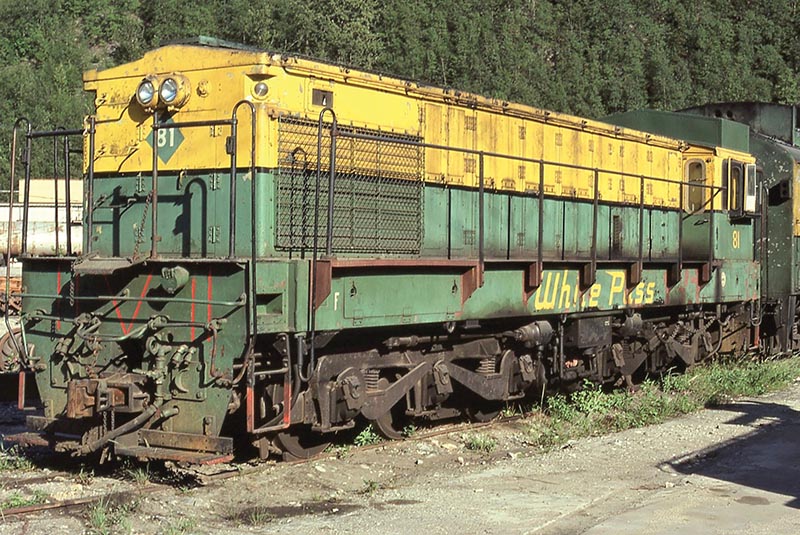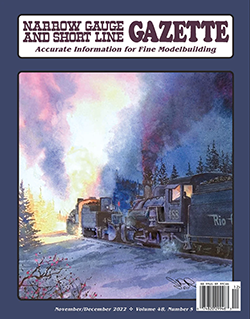 By Mike May with Robert Bell/photos as noted
By Mike May with Robert Bell/photos as noted
Like most modeling projects, this one started with a great idea, albeit a little crazy seeming. The two of us have been friends and chatting all-things White Pass and modeling for some time now, always brainstorming projects and solving modeling challenges. The White Pass is one of those roads that isn’t the easiest to model due to the lack of available models and parts. One Diesel locomotive prototype that we’ve talked about is no. 81 which was likely better known as U.S. Army no. 3000. As far as we knew it would need to be a complete scratchbuild project, at least until one slightly crazy idea was floated. This is the tale of two locomotive models, built on the same premise at the same time, but on different sides of the country and with different stories.
Both Rob and I both model the White Pass & Yukon Route in HOn3. Mike’s layout has graced the pages of the HOn3 Annual, the GAZETTE, and Great Model Railroads 2021. Rob’s layout is set in 1983, a year after the prototype shut down. His layout is only a few years old and still under construction, but is set to represent the White Pass circa 1955 to 1975. Both of our layouts have taken modeler’s license on different aspects of the prototype which relate to the different takes on this locomotive.
Locomotive 81’s History
In the mid 1950s, the United States Army approached several locomotive builders for experimental Diesels for possible foreign service. One such result was the U.S. Army Transportation Corps no. 3000 built by General Electric in 1957 and powered by an Alco 251 I6 Diesel. This loco-motive had the ability to operate on rail gauges of 42-inches, 39-inches (meter), or 36-inches by moving the wheels on one side in or out as needed. The locomotive was centered when configured for meter gauge track, but was slightly off balance when gauged for 36- or 42-inch gauge. Not necessarily an attractive locomotive, it could best be described as unique.
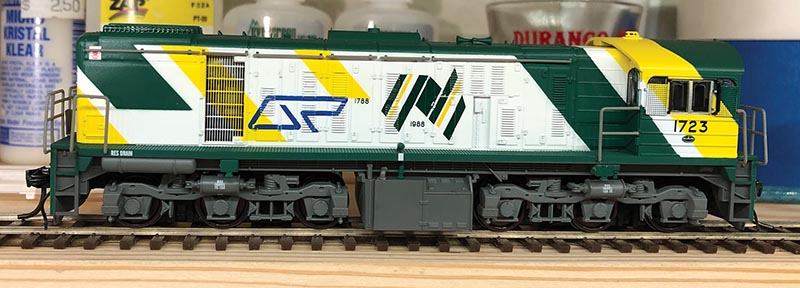
ABOVE: The stock Wuiske Models 1720 Class locomotive is a sharp looking ready to run HO scale model and the comparisons to WP&Y 81 are very apparent. Photo by Mike May
Specifications for this locomotive included several unique features for foreign service such as it’s low height and narrow width, with a relatively high clearance over the track using 40-inch diameter wheels. The unit was built for extreme cold weather conditions and could be started without external help at temperatures down to -50 degrees Fahrenheit due to special low temperature batteries. Other unique features included double-paned, insulated heated windows, and blind center wheels on the six-wheel trucks.
Number 3000 had slightly more tractive effort than a Rio Grande K-37, at 38,000 lbs., and the locomotive was tested on the D&RGW in Durango, Colo., until 1960. It was then stored until 1973 when the Army sold it back to GE, who in turn sold it to the White Pass & Yukon Route in southeast Alaska where it became their no. 81 in the fall of 1973; the second locomotive to carry this number on the White Pass. The White Pass was a very busy, modern narrow gauge rail-road at the time, and thus they needed a switcher for the Skagway end of the railroad. They had started to dieselize in 1954, and this slightly used engine must have seemed like a good deal.
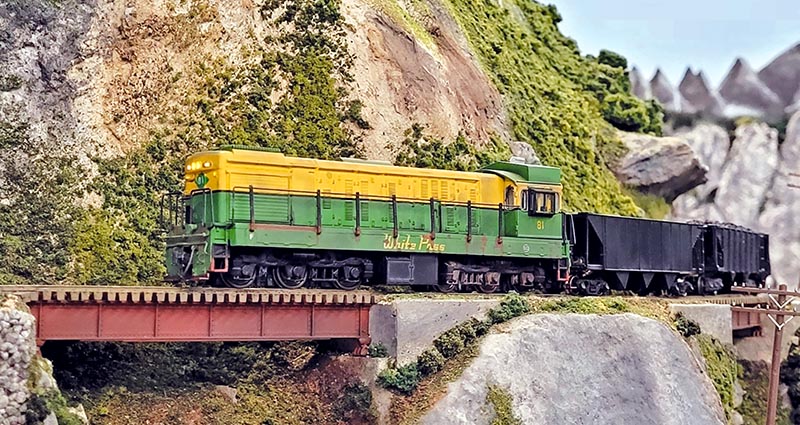
ABOVE: Rob Bell’s White Pass & Yukon Route no. 81 drags a ballast train upgrade at Clifton, Alaska, on his HOn3 layout. The locomotive was formerly, and likely, better known as United States Army Number 3000, an experimental export diesel locomotive that was tested extensively in Durango, Colo., on the D&RGW. Photo by Rob Bell
The White Pass crews like the earlier D&RGW crews, complained about the visibility over the long hood of the locomotive and the cramped cab. So the shop in-stalled bay windows, and later they raised the roof making the Diesel even odder looking. Wider walkways and full length handrails were also added. According to John Stutz, no. 81 was in a dead line behind the shops by October 1978, and according to Bryan Saul it was shipped to Bandegua (a Guatemalan subsidiary of Del Monte Foods) in 1979 where it became their no. 314. Reportedly it was scrapped by 2006.
The Australian Connection
As such a unique prototype, no models of this locomotive have been produced commercially. On an unrelated internet search one day, Rob ran across HO scale models of another unique narrow gauge Diesel locomotive, Australia’s Queensland Railway class 1720. The similarities to no. 81 were immediately apparent. The Queensland Railway is a 42-inch narrow gauge railroad that had 56 class 1720 lo-comotives built between 1966 and 1970, powered by EMD 645s. The model of this prototype is actually an HOn3.5 model made to run on 12mm gauge track by the Australian manufacturer Wuiske (pronounced whiskey) Models. Their website is wuiskemodels.com and they have a Facebook page as well.
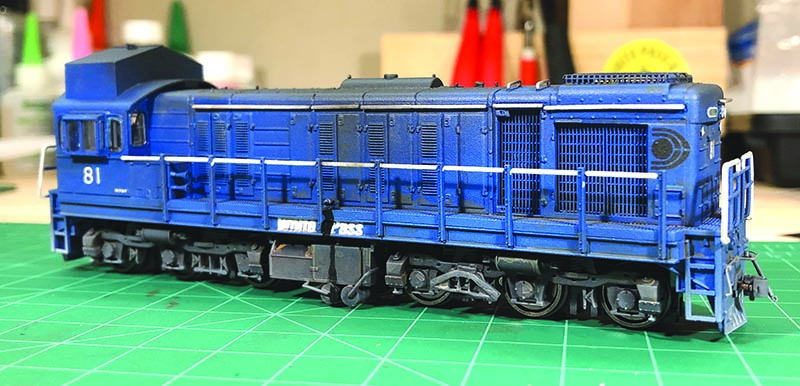
ABOVE: Fresh from the paint and weathering booth, Mike Mays’s model of a modern WP&Y 81 is ready for service on his layout. This model is certainly proto-freelanced but captures the essence of the prototype, especially had it stayed in service longer. Photo by Mike May
With an idea to convert one of these models into a recognizable model of the 81, more research and general proportion estimates began. Information is scarce for the 81, the main reference material be-ing an article by Ed Cass in the magazine Short and Narrow Rails issue no. 48. Additional photographs were also provided by Bryan Saul, John Stutz, and a few others.
Rob purchased his 1720 class model on eBay and ordered it, but they can be ordered directly from Wuiske, where I acquired mine. These locomotives retail for $295.00 AUD, which at the time came out to about $200.00 USD plus shipping.
So how does a 1720 compare to the real 81? Well, no. 81 is 38-feet 1-inch long com-pared to 44-feet for the 1720. The model’s 37-inch diameter wheels and unequal axle spacing on the trucks were close. Cab and hood heights also compared favorably…


